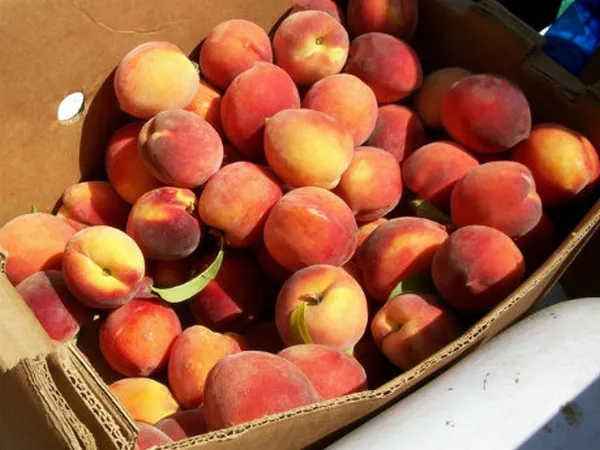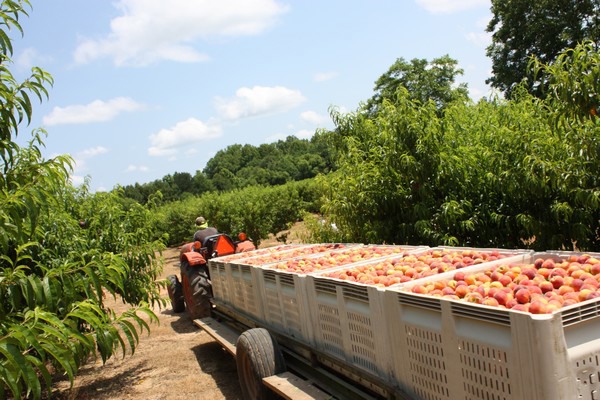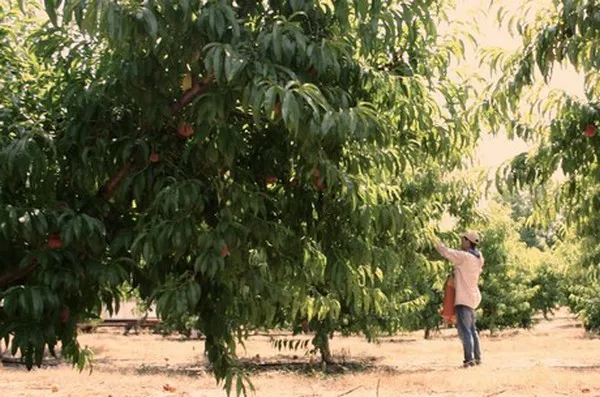Supplies of stone fruit in North America are good and increasingly building.
On the West Coast, coming off the long weekend, production will build on California peaches and nectarines--plums will soon start as well. As the season builds, Larry Davidson of North American Produce Buyers based in Toronto, Canada notes that the sizing is off this year. “It’s probably a combination of varying temperatures and the heavier load being left on the trees in some cases,” says Davidson. “With the labor and the water issues, I don’t think they had the ability to thin the trees the way they wanted to.” That said, he does add that the fruit is eating well given the high temperatures in the growing season brought out good sugars.
 Photo: North American Produce Buyers
Photo: North American Produce Buyers
Davidson also adds that supplies on the early season varieties are slimmer. “The yields on these April-May, early June varieties are not great. Growers are pulling these earlier varieties and not replacing them as they get older. They’re either planting other crops or just not planting anything possibly,” he says. While there used to be a school of thought that earlier varieties would mean getting to the market earlier and do well, economically that’s not proving as viable so growers are starting to backtrack.
Bigger South Carolina crop
In the East, Jimmy Forrest of Dixie Belle Peaches in Ridge Spring, SC notes that peaches from South Carolina and Georgia are seeing a good crop this season. “It’s a pretty big crop for a change compared to the last couple of years,” says Jimmy. “It’s been a good growing season and we escaped any freeze damage. The last two years that has been the culprit.” South Carolina began with peaches May 10th and will go until Labor Day and New Jersey will also start with peaches in the second or third week of July.
Back in California, peach supplies are steady, nectarine volumes are building and will soon move out of the early varieties such as Zee Fire and into proprietary varieties such as Honey Blaze so the the fruit will come on in larger sizes and eliminate some of the smaller fruit. “But there hasn’t been an abundance of nectarines yet,” adds Davidson.
Sizing is also of note. “There’s not enough big fruit and there’s too much small fruit in most cases,” Davidson says. Of course this plays into demand given generally consumers are looking for bigger fruit.
 Photo: Dixie Belle Peaches
Photo: Dixie Belle Peaches
While demand is good for stone fruit, last year stone fruit growers participated in U.S. government boxed food programs. “A lot of volume was moved through those programs on smaller sizes with very high prices. I think there was some thought that that program may have continued through this year,” says Davidson.
Sizing to come on
In South Carolina, Forrest says the color is good but in the past three weeks, the sizing has been smaller. “But after next week, sizing should be excellent for the remainder of the year,” he says.
He also says demand is good for peaches this year. “But last year there was only about 40-50 percent of a crop. Also people were staying home and eating more peaches,” Forrest says, noting currently pricing is average. “This year there’s 90 percent of a crop so supply is more even with demand.”
That’s leaving pricing high on big fruit which is slowing retail demand. But overall Davidson says prices are average to better-than-average. “The smaller fruit has gotten cheap, especially on peaches. Nectarines not as much,” he says. “But the yellow peaches and white peaches on small sizes--70s, 80s even 60s now--there’s pressure on the market.”
 Photo: Dixie Belle Peaches
Photo: Dixie Belle Peaches
Overall, Davidson notes that the increasing challenges in growing stone fruit means higher prices could be in order. “We need to work with the assumption that going forward, prices of stone fruit as it filters through retail, need to be higher for the industry to stay viable.”
 For more information:
For more information:
Larry Davidson
North American Produce Buyers
Tel: +1 (416) 255-5544
l.davidson@naproduce.com
www.naproduce.com
 Jimmy Forrest
Jimmy Forrest
Dixie Belle, Inc.
Tel: +1 (803) 685-7735
info@dixiebellepeaches.com
www.dixiebellepeaches.com
